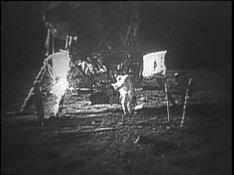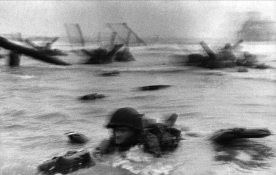Seeing What the First Leica Photographers Photographed
Your question and line of inquiry regarding the first Leicas touches on the larger issue of how we "see." For me, this is an issue of both professional and personal interest . . . I am a Leica shooter and I design visualization software. Allow me to make a couple of observations/points:
1) "Seeing" is a largely cognitive process that involves, among other things, the subconscious reinterpretation of a two dimensional representation on our retina into a three dimensional spatial scene. "Pixel count" is merely one factor that influences how the brain/mind accomplishes this task.
2) As another thread contributor guessed (correctly), the mind constructs the image we see by integrating a series of "perceptive passes" over the field of view and knitting them together to form what we perceive as "what we see." As the eye is sweeping a scene, it is constantly adjusting the iris (aperture) to compensate for different light levels (think HDR only biological) as well as INCLUDING and EXCLUDING items that either meet or fail to meet what is of conscious interest to the viewer. You know the phrase: "I looked right at it and just didn't see it." Indeed. Visual cognition at work. (For more info on this process, take a look at this book:
http://www.amazon.com/Visual-Intell...9679/ref=sr_1_1?ie=UTF8&qid=1294156047&sr=8-1)
3) Viewing a photograph is actually done from a perspective that is two degrees removed from objective reality (that is, what a collection of CCTV cameras might record): first, you are seeing what the photographer has chosen to capture, in the manner s/he chose, with the tools s/he had available. Lots of subjectivity and exclusion at work here. Second, you are also bringing cognitive biases to bear on your process of looking at that image. If, for instance, you are looking at one of HCB's images, you might ask: is this a decisive moment? If so, how? Or perhaps you are hyper attentive to the sexual tension that suffuses Helmet Newton's work. Either way, you are subconsciously (and maybe consciously) filtering the scene, emphasizing some elements, while de-emphasizing others. And because of that, the moment of visual cognition and apprehension is ultimately personal and unique.
So what does this mean for the early Leica shooters? And why was their work considered "great"? The early Leica shooters were using an instrument that was the first of a new genre of photographic tool: light, portable, high quality lens, virtually indestructible. For its time, the Leica was the best of its class. And the images that were produced were, for their time, some of the best.
Best in what way? Well, the portability of the Leica enabled photographers to take a camera where it previously could not, the quality of the lens (and their speed) enabled them to capture scenes that had eluded earlier generations of photographers, and the ruggedness of the camera enabled them to capture scenes that would have literally destroyed other instruments. Put another way, they captured life in the extreme, on the edge, in the shadows. And before the advent of the portable, small camera (e.g. Leica) that was difficult if not impossible to do.
And pixel count? However you equate pixels to a particular film's resolving power, the fact remains that the emotive and intellectual power of these images was not compromised by either the optics or the film technology of the time. How can I be sure? We still view those old images with wonder, we still perceive the moments the photographer sought to capture, and we agree --- however much technology has advanced --- that many of those images changed how we look at the world and indeed, how we photograph our world.






